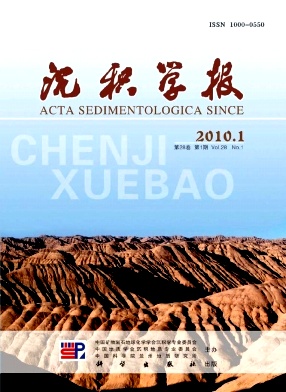Chemical Thermodynamics Foundation of Retrograde Solubility for Carbonate:Solution Media Related to H2S and Comparing to CO2
- Received Date: 1900-01-01
- Rev Recd Date: 1900-01-01
- Publish Date: 2010-02-10
-
Key words:
- retrograde solubility
Abstract: In this paper, the equilibrium constant of the reactions related to the H2S (g) /H2S (aq) / HS / H+ / S2 system at various temperatures has been calculated as a foundation of increment of Gibbs free energy. The relationship between pH, fluid pressure and buried depth during the dissolution of calcite and dolomite in acetic medium are attained. The different contributions of CO2 and H2S to \[H+\] and different dissolution ability to carbonate of the two media under the conditions from surface to deep buried are described as follow: 1) Temperature and (or) PCO2 increasing will lead to the elevation of \[H+\] that need to dissolve the calcite and dolomite whether CO2 or H2S as a dissolvent. At relatively deep burial conditions, high PCO2 led by high fluid pressure would make the carbonate dissolution more difficult. CO2 increasing may cause the precipitation of carbonate minerals instead of the dissolution if \[H+\] was buffered; 2) The retrograde solubility model of carbonate minerals is tenable on chemistry no matter what type of acid medium. Low temperature diagenesis environment, upward migration of deep hydrothermal and the tectonic uplift would result in the temperature decreasing (ΔT) and improve the solution ability of H2S and CO2 (including other acid medium) to carbonate minerals; 3) In surface and near surface (the depth range of several hundred meters), the \[H+\] contributed by dissolved CO2 is slightly higher than that contributed by dissolved H2S when CO2 and H2S coexist. Acid fluid related to CO2 is relatively important for the dissolution of carbonate minerals, however, the \[H+\] contributed by dissolved H2S is much greater than that contributed by dissolved CO2 in deep burial, especially when the depth is more than 4000 m. Deep dissolution of carbonate would be more developed in deep buried condition where sulfate reduction exists, which could be one of the important reasons why secondary porosity develop in deep burial, NE Sichuan.
| Citation: | HUANG Sijing. Chemical Thermodynamics Foundation of Retrograde Solubility for Carbonate:Solution Media Related to H2S and Comparing to CO2[J]. Acta Sedimentologica Sinica, 2010, 28(1): 1-9. |






 DownLoad:
DownLoad: